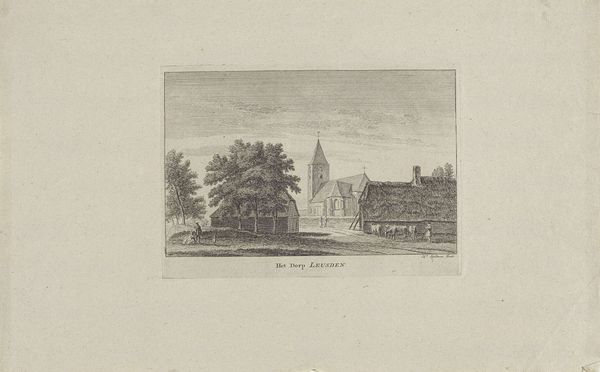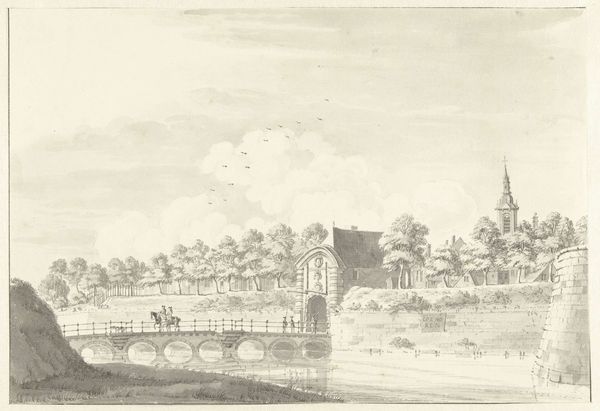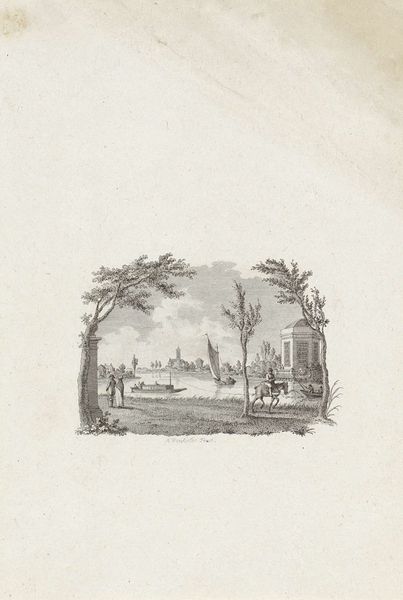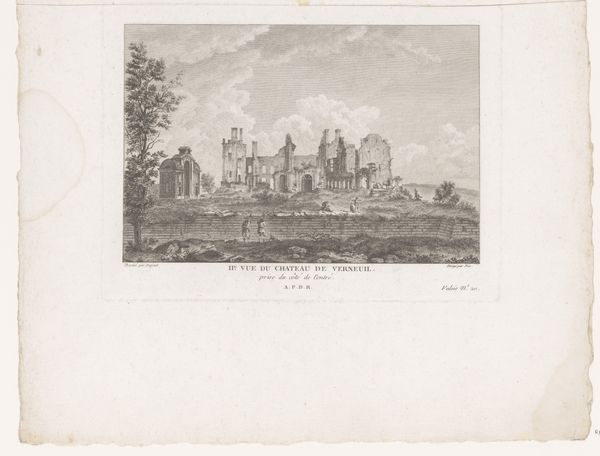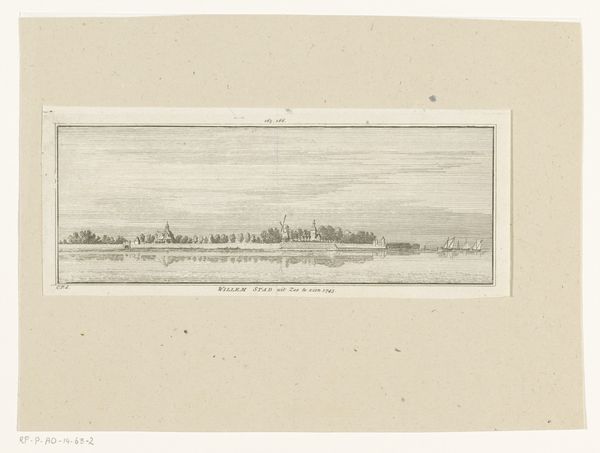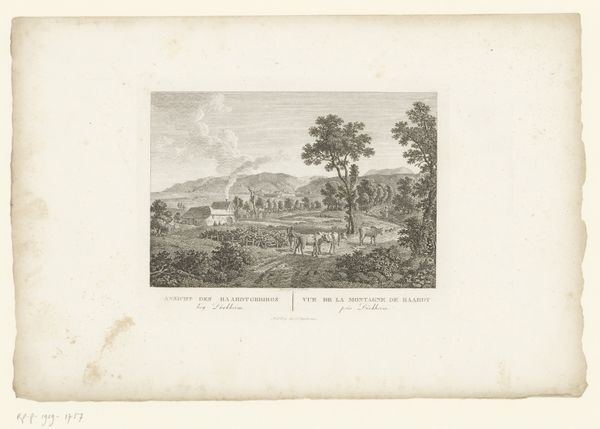
print, etching
#
dutch-golden-age
# print
#
etching
#
landscape
#
cityscape
#
realism
Dimensions: height 135 mm, width 190 mm
Copyright: Rijks Museum: Open Domain
Curator: Looking at Hendrik Spilman’s etching, "Gezicht op de Tolsteegpoort te Utrecht," which we estimate he made sometime between 1742 and 1784, it's striking how clearly we see Utrecht as a city defining and defending itself. Editor: Immediately, I'm struck by a sense of quiet industriousness. The etching is dominated by the solid structure of the city gate and the prominent windmill nearby. It all speaks to a deliberate shaping of the land. Curator: Absolutely. The Tolsteegpoort itself would have been a significant site for trade and the collection of tolls, very crucial aspects of Utrecht's economic and political structure during that period. Editor: Yes, a visual reminder of civic authority. And, of course, the windmill is an age-old emblem of Dutch perseverance and ingenuity, its rotating blades mirroring the cyclical nature of labor and the harvesting of resources. Water is often a carrier of such symbols in artwork. Curator: It's also interesting to note how Spilman uses line and form. While accurately representing the scene, he subtly highlights the interplay between urban development and the natural world. This creates a narrative about Utrecht's transformation and adaptation. Editor: The somewhat dreamlike atmosphere is very curious, too. Look at the way the light interacts with the buildings, drawing our eyes towards particular features but also letting them fade gently into the horizon. It invites you to linger, even meditate on the landscape. Curator: It offers a window into the past and provides clues about the priorities and self-image of Utrecht at the time. The positioning and perspective chosen by Spilman emphasize how urban centers controlled both access and resources, influencing social structures and daily life. Editor: Yes, you can sense the echoes of generations within the landscape, the gate, the waterway, all symbols layered with historical consciousness. Thinking about what this etching meant to Spilman’s audience deepens its emotional impact, really. Curator: Precisely. It all serves to reinforce how even a seemingly simple landscape harbors multifaceted historical narratives. Editor: I leave with a renewed appreciation for how imagery becomes culturally inscribed and carries its own silent history.
Comments
No comments
Be the first to comment and join the conversation on the ultimate creative platform.

